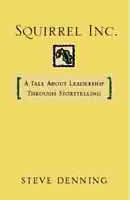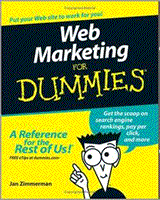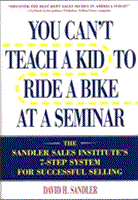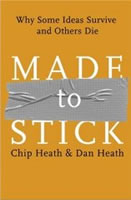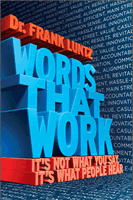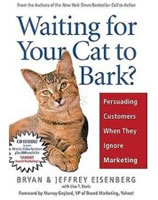 The subtitle of this book (“Persuading Customers When They Ignore Marketing”) gives a hint about its purpose: how to appeal to your prospective customers. While the book can be enjoyed by any small business owner, the information is a bit more sophisticated than the usual “here’s some simple ways to improve your business’ marketing”.
The subtitle of this book (“Persuading Customers When They Ignore Marketing”) gives a hint about its purpose: how to appeal to your prospective customers. While the book can be enjoyed by any small business owner, the information is a bit more sophisticated than the usual “here’s some simple ways to improve your business’ marketing”.
The authors have developed Persuasion Architecture™ which attempts to overcome the traditional obstacles to connecting with your customers:
- Uncovery : Identifying the key benefits for your customer.
- Wireframing : The steps of the marketing “experience”.
- Storyboarding : The mock-ups of the marketing experience.
- Prototyping : The “final” marketing pieces.
- Development : Ensuring that the prototype matches the wireframe experience.
- Optimization : Measuring the results and refining the message.
Persuasion Architecture attempts to figure out all the different ways a prospective customer would need information, and provide it to them ahead of time. They’ve extended the traditional business school model of AIDA (Attention -> Interest -> Desire -> Action) to AIDAS (Attention -> Interest -> Desire -> Action -> Satisfaction), since satisfaction is what generates word-of-mouth mentions.
For me, the best parts of the book were chapter fifteen (“Personas” – which described the different filters people use to get information) and chapter 20 (“The Human Operating System” – which described the basic 4 ways people ask questions).
The key points about personas:
- Topology: How is your product used? What are the competitors? How did people solve the problem before your product came about?
- Psychographics: How do different people behave (based on lifestyle and personality profile)
- Demographics: Where are our customers and what do they look like?
- Empathy: How can you “do for others as they would like it done to them?”
The 4 ways people ask questions:
- Methodical: focus on HOW (“What are the details? What’s the fine print?”)
- Spontaneous: focus on WHY or WHEN (“How can you get me to what I need quickly? Do you offer superior service?”)
- Humanistic: focus on WHO (“How will your product or service make me feel? Who are you? Can I trust you?”)
- Competitive: focus on WHAT (“What are your competitive advantages? What are your credentials?”)
I would have liked to see some specific step-by-step examples of applying the Persuasion Architecture to existing businesses (rather than identifying some businesses that use a feature or two of the process). Nonetheless, the book can serve as a good checklist for developing (or improving) your marketing strategy.

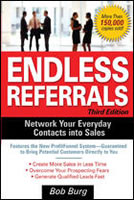
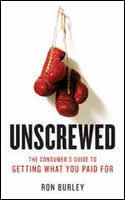
 Aikido is a Japanese martial art based on “blending with your opponents’ energy”. As I learned during my 12+ years of training on the mat, victory over others is a matter of physical and mental training. In business, you need to win over your customer prospects and stand out from your competition.
Aikido is a Japanese martial art based on “blending with your opponents’ energy”. As I learned during my 12+ years of training on the mat, victory over others is a matter of physical and mental training. In business, you need to win over your customer prospects and stand out from your competition.
